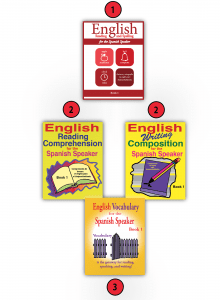Recognizing Dyslexia
Having two boys who had difficulty learning to read, I have been interested in dyslexia for many years. Recently, I came across The Yale Center for Dyslexia and Creativity. Their website if full of very useful information about dyslexia and what is being done to help students and adults who have dyslexia and how to start recognizing dyslexia. The information below is from their website.
Recognizing Dyslexia – “Dyslexia is highly prevalent, affecting 1 out of every 5 children and adults. Dyslexia is recognized as an unexpected difficulty in reading in individuals who have the ability to be better readers. It is universal, and crosses racial, ethnic and socioeconomic lines; and, with proper identification, evidence-based instruction and accommodations, dyslexic students can thrive. However, the diagnosis and treatment of dyslexia remain elusive in public schools, and even more so in urban school populations comprising African-American and Latino communities. Children with dyslexia who labor to read and who do not understand the nature of their difficulties and cannot fathom that they are intelligent are marginalized and left to flounder and ultimately risk falling completely through the cracks, dropping out of school and facing dismal futures. With proper identification and intervention, this is preventable, with students going on to have their lives defined by their excellent thinking and reasoning skills.
In 2016, the Senate passed Resolution 576 which calls on “Congress, schools and State and local educational agencies to recognize the significant educational implications of dyslexia that must be addressed…” Resolution 576 defines dyslexia as “an unexpected difficulty in reading for an individual who has the intelligence to be a much better reader,” and notes that dyslexia is “most commonly due to a difficulty in phonological processing (the appreciation of the individual sounds of spoken language), which affects the ability of an individual to speak, read, spell, and often, learn a second language.” The Resolution describes dyslexia as “the most common learning disability,” affecting “80 percent to 90 percent of all individuals with a learning disability.” It goes on to assert that “dyslexia is highly prevalent, affecting as many as one out of five individuals, and persistent. Dyslexia is a paradox such that an individual with dyslexia may have (1) weaknesses in decoding that results in difficulties in accurate or fluent word recognition; and (2) strengths in higher-level cognitive functions, such as reasoning, critical thinking, concept formation, or problem solving; … great progress has been made in understanding dyslexia on a scientific level, including the epidemiology and cognitive and neurobiological bases of dyslexia. Early diagnosis of dyslexia is critical for ensuring that individuals with dyslexia receive focused, evidence-based intervention that leads to the promotion of self-awareness and self-empowerment and the provision of necessary accommodations so as to ensure school and life success.”
The Yale Center for Dyslexia and Creativity has developed the Shaywitz DyslexiaScreen (SDS). This evidenced-based screener takes less than five minutes per student and is completed by teachers based on their on-going observations in the classroom, and is scored electronically via an iPad. The cost for the screen is one dollar per student. There is one for kindergartners, and another for first graders for identifying those children at-risk for dyslexia. Research findings by the Yale Center found there is already a large achievement gap between typical and dyslexic students as early as first grade. Waiting for Children to read by third grad is waiting too long.
As a mother of two boys who had difficulty learning to read and therefore had difficulty in school, I have seen dyslexia in action and i know how hard it was to recognize dyslexia. I am happy to say one son is now getting his Ph.D in chemistry at the age 30. The other, who dropped out of high school but had computer jobs since the age of 16, worked for Twitter by age 21, is now doing software development for Booking.com in the Netherlands. As an educator and parent I knew my boys had a weakness in reading but both had high levels of cognitive functions. I am happy to say they are both pursuing careers they enjoy.
As a kindergarten and first grade teacher, I have seen how important multi-sensory, structured and explicit teaching of the speech sounds and reading comprehension skills are to children with dyslexia in kindergarten and first grade.
Fisher Hill has an excellent English literacy program for Spanish-speaking teens and adults who want to learn how to read and write in English. The program uses a multi-sensory, structured and explicit approach to teaching the English speech sounds, comprehension, writing, and vocabulary skills.
How does our literacy program work? We have four different series in our literacy program. Each series has six volumes. Each volume is a workbook. These four series can be used in conjunction with each other. The very first book to use would be English Reading and Spelling for the Spanish Speaker Book 1. This series introduces students to reading in English. The series uses a very systematic, explicit approach to teaching the forty-four speech sounds used in the English language. After completing English Reading and Spelling for the Spanish Speaker Book 1, students are ready to practice their beginning reading skills by using English Reading Comprehension for the Spanish Speaker Book 1. They can also begin practicing writing by using English Writing Composition for the Spanish Speaker Book 1. English Vocabulary for the Spanish Speaker Book 1 reviews the vocabulary presented in English Reading and Spelling for the Spanish Speaker Book 1. After completing the Book Ones in the series, students can begin the Book Twos. The four series, each with six workbooks, were written to be used together. By using the four series together, students get a good foundation in English literacy.
Adults like our workbooks because the pace is reasonable, print is large, directions are in Spanish, there’s lots of pictures but the content is for adults. Teachers like our books because everything is ready to go! There’s an answer key at the the end of each lesson and an English translation of the Spanish directions at the end of each book.
Visit our website at www.Fisher-Hill.com to learn more about our English literacy program.


You must belogged in to post a comment.